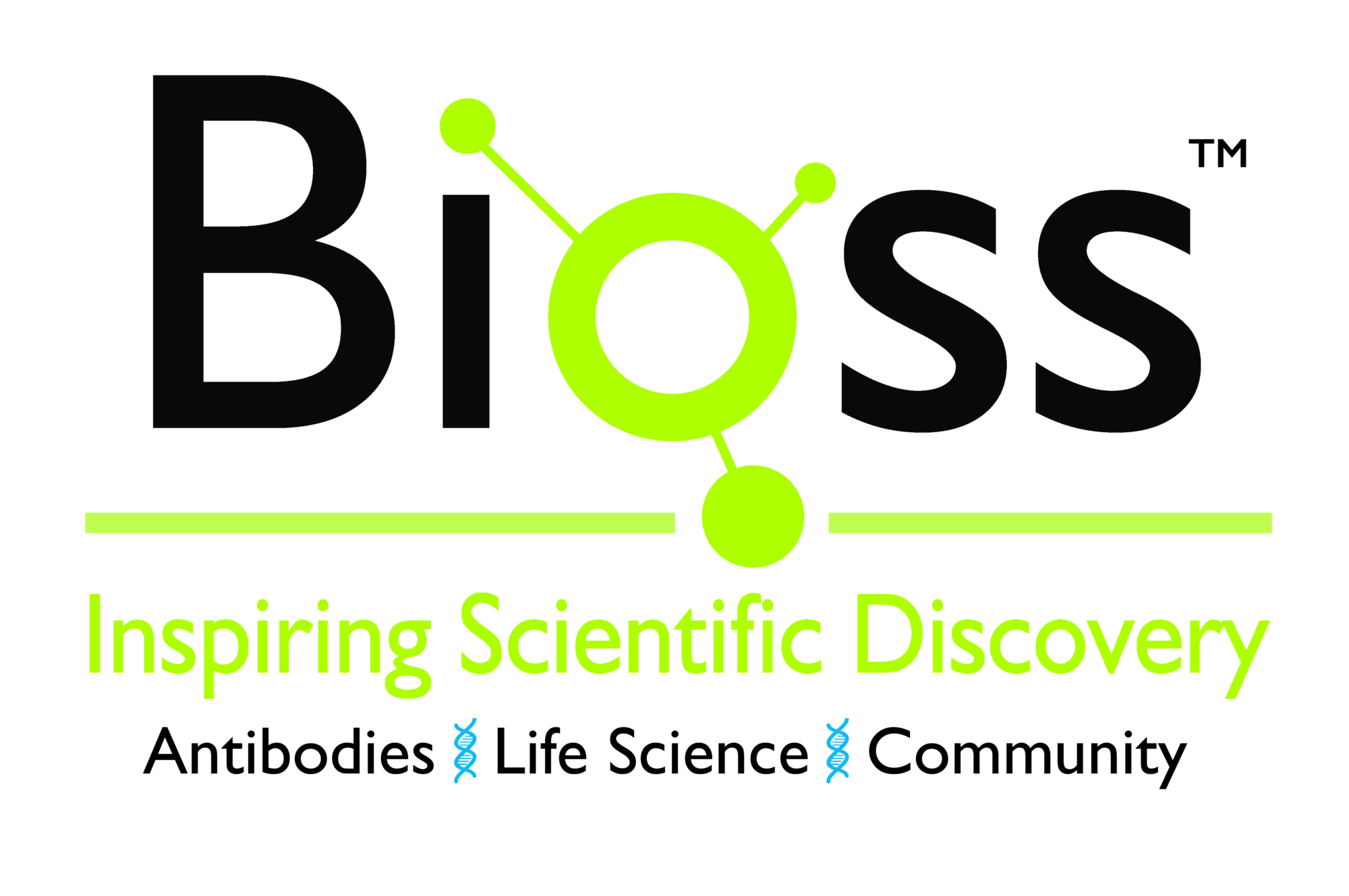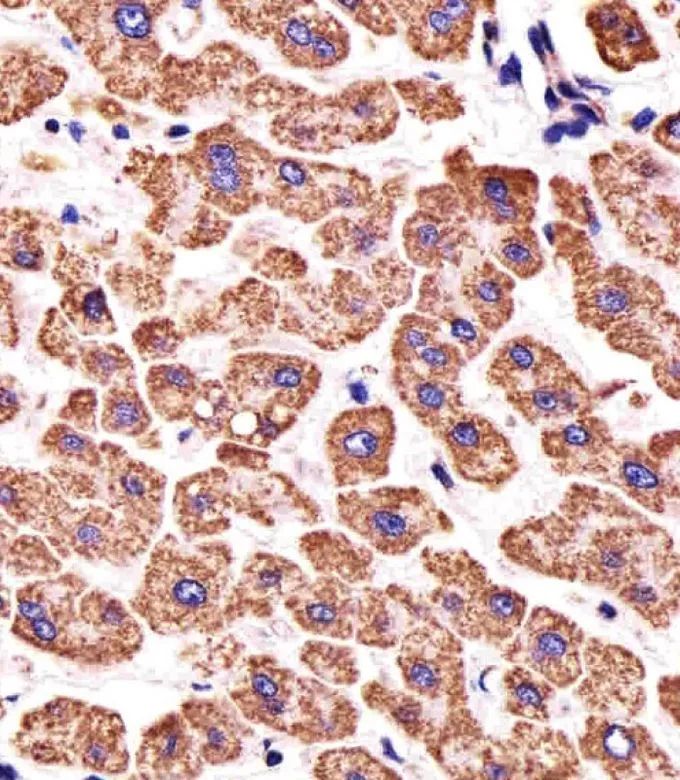![ICC/IF analysis of COS7 cells transiently transfected with ATP5B plasmid using GTX84841 ATP5B antibody [5G2]. ICC/IF analysis of COS7 cells transiently transfected with ATP5B plasmid using GTX84841 ATP5B antibody [5G2].](https://www.genetex.com/upload/website/prouct_img/normal/GTX84841/GTX84841_1255_ICCIF_w_23061420_173.webp)
ICC/IF analysis of COS7 cells transiently transfected with ATP5B plasmid using GTX84841 ATP5B antibody [5G2].
ATP5B antibody [5G2]
GTX84841
ApplicationsFlow Cytometry, ImmunoFluorescence, Western Blot, ImmunoCytoChemistry, ImmunoHistoChemistry, ImmunoHistoChemistry Paraffin
Product group Antibodies
ReactivityCanine, Human, Monkey, Rat
TargetATP5F1B
Overview
- SupplierGeneTex
- Product NameATP5B antibody [5G2]
- Delivery Days Customer9
- Application Supplier NoteWB: 1:2000. ICC/IF: 1:100. IHC-P: 1:50. FACS: 1:100. *Optimal dilutions/concentrations should be determined by the researcher.Not tested in other applications.
- ApplicationsFlow Cytometry, ImmunoFluorescence, Western Blot, ImmunoCytoChemistry, ImmunoHistoChemistry, ImmunoHistoChemistry Paraffin
- CertificationResearch Use Only
- ClonalityMonoclonal
- Clone ID5G2
- Concentration0.5 mg/ml
- ConjugateUnconjugated
- Gene ID506
- Target nameATP5F1B
- Target descriptionATP synthase F1 subunit beta
- Target synonymsATP5B, ATPMB, ATPSB, HEL-S-271, HUMOP2, ATP synthase F(1) complex subunit beta, mitochondrial, ATP synthase subunit beta, mitochondrial, ATP synthase, H+ transporting, mitochondrial F1 complex, beta polypeptide, epididymis secretory protein Li 271, mitochondrial ATP synthase beta subunit, mitochondrial ATP synthetase, beta subunit
- HostMouse
- IsotypeIgG1
- Scientific DescriptionMitochondrial membrane ATP synthase (F(1)F(0) ATP synthase or Complex V) produces ATP from ADP in the presence of a proton gradient across the membrane which is generated by electron transport complexes of the respiratory chain. F-type ATPases consist of two structural domains, F(1) - containing the extramembraneous catalytic core, and F(0) - containing the membrane proton channel, linked together by a central stalk and a peripheral stalk. During catalysis, ATP synthesis in the catalytic domain of F(1) is coupled via a rotary mechanism of the central stalk subunits to proton translocation. Subunits alpha and beta form the catalytic core in F(1). Rotation of the central stalk against the surrounding alpha(3)beta(3) subunits leads to hydrolysis of ATP in three separate catalytic sites on the beta subunits.
- ReactivityCanine, Human, Monkey, Rat
- Storage Instruction-20°C or -80°C,2°C to 8°C
- UNSPSC12352203

![ICC/IF analysis of HepG2 cells using GTX84841 ATP5B antibody [5G2]. ICC/IF analysis of HepG2 cells using GTX84841 ATP5B antibody [5G2].](https://www.genetex.com/upload/website/prouct_img/normal/GTX84841/GTX84841_1256_ICCIF_w_23061420_305.webp)
![IHC-P analysis of liver carcinoma tissue using GTX84841 ATP5B antibody [5G2]. Antigen retrieval : Heat-induced epitope retrieval by 10mM citrate buffer, pH6.0, 100oC for 10min. Dilution : 1:50 IHC-P analysis of liver carcinoma tissue using GTX84841 ATP5B antibody [5G2]. Antigen retrieval : Heat-induced epitope retrieval by 10mM citrate buffer, pH6.0, 100oC for 10min. Dilution : 1:50](https://www.genetex.com/upload/website/prouct_img/normal/GTX84841/GTX84841_3161_IHC-P_w_23061420_962.webp)
![WB analysis of HEK293T cells transfected with ATP5B plasmid (Right) or empty vector (Left) for 48 hrs using GTX84841 ATP5B antibody [5G2]. Loading : 5 ug per lane WB analysis of HEK293T cells transfected with ATP5B plasmid (Right) or empty vector (Left) for 48 hrs using GTX84841 ATP5B antibody [5G2]. Loading : 5 ug per lane](https://www.genetex.com/upload/website/prouct_img/normal/GTX84841/GTX84841_4659_WB_w_23061420_122.webp)
![WB analysis of various cell lines using GTX84841 ATP5B antibody [5G2]. Loading : 35 ug per lane WB analysis of various cell lines using GTX84841 ATP5B antibody [5G2]. Loading : 35 ug per lane](https://www.genetex.com/upload/website/prouct_img/normal/GTX84841/GTX84841_4660_WB_w_23061420_621.webp)
![FACS analysis of HEK293T cells transfected with either ATP5B plasmid(Red) or empty vector control plasmid(Blue) using GTX84841 ATP5B antibody [5G2]. FACS analysis of HEK293T cells transfected with either ATP5B plasmid(Red) or empty vector control plasmid(Blue) using GTX84841 ATP5B antibody [5G2].](https://www.genetex.com/upload/website/prouct_img/normal/GTX84841/GTX84841_577_FACS_w_23061420_426.webp)




![ICC/IF analysis of COS7 cells transiently transfected with ATP5B plasmid using GTX84843 ATP5B antibody [7F4].](https://www.genetex.com/upload/website/prouct_img/normal/GTX84843/GTX84843_1257_ICCIF_w_23061420_772.webp)
![ICC/IF analysis of COS7 cells transiently transfected with ATP5B plasmid using GTX84845 ATP5B antibody [1B10].](https://www.genetex.com/upload/website/prouct_img/normal/GTX84845/GTX84845_1259_ICCIF_w_23061420_770.webp)
![ICC/IF analysis of COS7 cells transiently transfected with ATP5B plasmid using GTX84848 ATP5B antibody [6C4].](https://www.genetex.com/upload/website/prouct_img/normal/GTX84848/GTX84848_1260_ICCIF_w_23061420_823.webp)